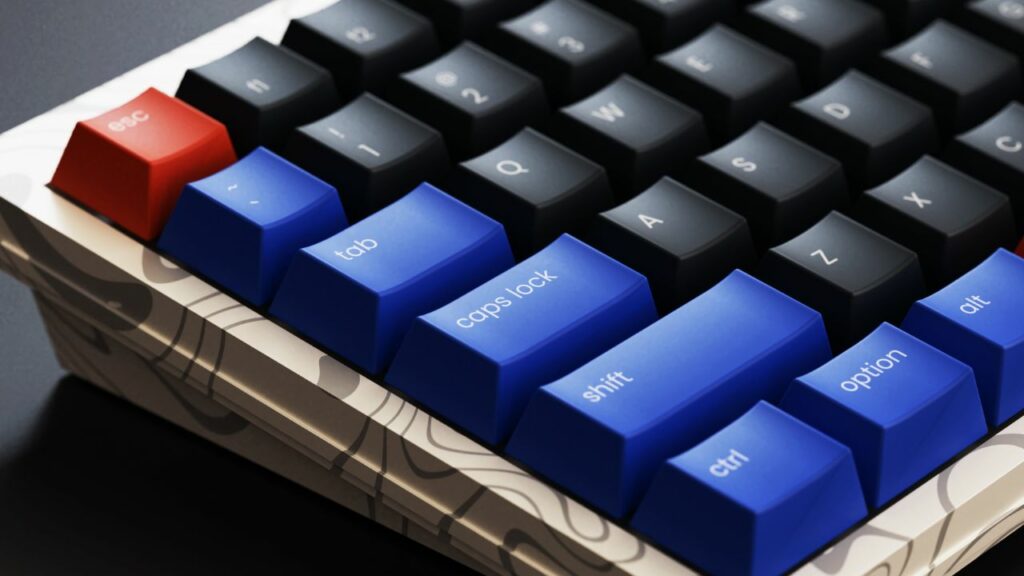In a digital era where keyboards have become our main tool of communication, it’s curious how we often overlook their importance. Be you a swift touch typist, a coding whiz, an avid gamer, or just someone who spends hours crafting emails, it might be time to rethink your keyboard situation. Say hello to mechanical keyboards – celebrated for their pinpoint accuracy, tactile feedback, and robust longevity. But what makes these devices tick? Let’s peel back the curtain.
Getting Started: Understanding the Workings of Mechanical Keyboards – Tactile vs Linear Switches
Mechanical keyboards come in two main styles: tactile and linear switches. Tactile switches give you a noticeable “bump” midway through the keypress before bottoming out – hinting that your keypress has registered. This feedback can help prevent unnecessary strain from bottoming out keys.
Linear switches, on the other hand, provide a smooth keystroke from start to finish without any bumps or clicks along the way – ideal for those who prefer a fluid typing experience or gamers who need fast repetitive keystrokes.
The Science Behind the Click: Electrical Connections
The secret sauce behind the satisfying click of mechanical keyboards lies in their design. When you press a key, a spring-loaded switch is depressed. This switch comprises a slider with a small prong that keeps the circuit open when at rest. As you press down, the prong moves and eventually closes the circuit, sending an electrical signal to your computer indicating a keypress.
The Journey of A Keypress: From Start to Finish
In linear switches, this journey is smooth from start to finish. The moment you begin pressing a key until it bottoms out and bounces back, there’s no change in resistance or feedback.
On the other hand, tactile switches introduce an interesting twist. They have a noticeable bump midway through the travel of the slider, designed to tell your fingers that they’ve done their job without needing to bottom out completely.
From Cherry To Gateron: The Evolution Of Mechanical Switches
Originally patented by Cherry Corporation in 1984 (yes they are as old as Ghostbusters!), these iconic switches have served as inspiration for many clones after its patent expired recently. Today companies such as Gateron and Kailh offer their own versions adding variety to an already diverse field.
In conclusion, whether you’re after increased typing precision or just want something fun and customizable on your desk – there’s probably a mechanical keyboard out there for you!
Benefits Beyond Feel: Longevity and Customization

Mechanical keyboards aren’t just about feeling good under your fingers; they also boast impressive longevity. Some are rated up to an astonishing 100 million keypresses! To put that into perspective, if Stephen King had used one while writing his 60+ novels over his career it would still be going strong!
For those interested in personalizing their workspace or showing off their flair (looking at you RGB fans), mechanical keyboards offer unrivaled customization options with easily removable and replaceable keycaps.
I recommend reading this article which delves deeper into the benefits of mechanical keyboards.
The Gaming Edge: Rollover Feature
For gamers specifically, features like rollover can be game-changers (pun intended). This allows multiple keys pressed simultaneously to register individually – ever tried rapid combo moves on generic office keyboard? Yeah… doesn’t work so well!
If you’re looking for an affordable entry point into this world of clacking bliss without breaking the bank check out this list I found featuring some best budget mechanical keyboards available right now.
Clicky Switches: An Orchestra Under Your Fingers

For those who enjoy auditory feedback along with tactile sensations, clicky switches are ideal. These combine both tactile and audible cues for each keystroke. Some switches even offer more than one click per keypress – providing an orchestra of clicks with every word you type!
What’s In A Name: Cherry, Gateron And Kailh
When exploring mechanical keyboards, these three names will come up frequently – Cherry, Gateron and Kailh. Cherry was the original pioneer in mechanical switch technology but since their patent expired, companies like Gateron and Kailh have stepped into the arena offering their own variants of mechanical switches.
Frequently Asked Questions
Are mechanical keyboards really better?
Yes and no. It depends on what you value in a keyboard. If precision, longevity and customizable features matter to you then yes! Mechanical keyboards offer excellent benefits over their membrane counterparts.
Why are mechanical keyboards louder?
The “click” sound produced by mechanical keyboards is due to the physical mechanism involved in registering each keystroke – something absent in most common rubber dome keyboards.
Do all mechanical keyboards ‘click’?
Nope! Mechanical keyboard switches come in different types – tactile (bump), linear (smooth), and clicky (bump + sound). So if noise is a concern for you don’t worry – there’s likely a silent mechanical keyboard out there for you!
Are mechanical keyboards expensive?
While they can be pricier than standard membrane keyboards due to their build quality and features, there are many budget options available too! Check out this list of budget-friendly options.